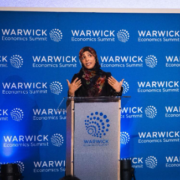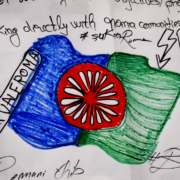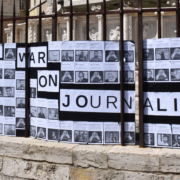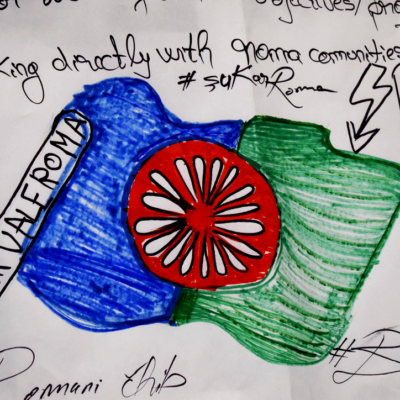As the fight against HIV/AIDS steps up, so do the calls for drastic policy change. Orange looks at the latest updates in this year’s International AIDS Conference.
25,000 people from 185 countries. What can they possibly hope to achieve in this year’s International AIDS Conference in Vienna?
Conferences are notorious for consuming vast amounts of time, effort and money. People who fly from all over the world present papers, and meetings are held for days. In some cases – as with the case of the UN Climate Change Summit held in Copenhagen – the conferences are unsuccessful in general, with results that turn out to be less than satisfactory.
However, this does not appear to be the case in the XVIII International AIDS Conference, dubbed “Rights Here, Right Now.” The centerpiece of the conference, The Vienna Declaration, contains solid steps to ensure that human rights are protected through the decriminalisation of drug use and possession, as well as a comprehensive drug policy reform programme through a science-based approach. It also points out drug-related issues, such as increased criminal activity and wasted taxpayers’ money.
The Vienna Declaration was largely lauded by the scientific community and supported by high-profile government officials, Nobel Laureates and private companies, but the largely agreeable face of the conference – where most of the attendees have already agreed on the agenda – hides problems that will not go away unless drastic action is taken, and soon.
The call for drastic action and increased funding is what brings AIDS activists together with researchers, policymakers and grassroots workers for a structured dialogue regarding the major issues on the global response to HIV/AIDS. With a global economic crisis threatening to undermine public investments, the conference aims to keep HIV/AIDS on the front burner. The selection of Vienna as the host city is a reflection of the central role Vienna has played in bridging Eastern and Western Europe, but is also due to its proximity to Eastern Europe and Central Asia, both regions with a growing HIV/AIDS epidemic fueled primarily by injecting drug use.
The changing faces of AIDS
The International AIDS Conference is the 18th since the Acquired Immune Deficiency Syndrome (AIDS) first came to light in 1981. Ever since, it has killed more than 25 million people. It’s a severe pandemic without borders. HIV/AIDS is everywhere, but the intensity of the spread of the virus varies due to divergent causes.
In the Russian federation, there is insufficient access to information on HIV, while efforts to reach men who have sex with men with prevention service are hampered by homophobia. In Malawi, you might have to travel 100 kilometers to obtain access to treatment. In parts of the Middle East, blood transfusions are still not completely safe. In Ghana, more than 40 percent of infections occur through sex work, men having sex with men and the use of injected drugs, but only 0.24 percent of the national budget on prevention spending is given to these groups.
In his keynote speech at the AIDS conference Bill Gates spoke on the historic opportunity to “Change the face of AIDS” by outlining a roadmap to dramatically reduce new HIV infections. He outlined opportunities for global AIDS investment to save more lives and called for a new focus on efficiency in HIV prevention and treatment. UNAIDS agrees with his call, saying it must magnify its focus on HIV prevention while addressing the specific needs of each key population including youth, women and girls, sex workers and their clients, people who use injected drugs, men who have sex with men, prisoners, refugees and migrants.
Despite efforts to keep HIV/AIDS at bay, more and more people acquire the dreaded virus, with 2.7 million new infections yearly. Worldwide, there are now more than 33 million people living with HIV/AIDS. The demographic of HIV/AIDS patients has changed as well; what used to be called the “gay disease” is no longer limited to men who have sex with men or injected drug users, for that matter. Women and children are now part of the global epidemic that has claimed the lives of over 25 million to date, despite efforts to disseminate information that mother-to-child HIV can be prevented or contained.
Rights here, right now
The theme of AIDS 2010, ‘Rights Here, Right Now’ was chosen to emphasize the critical connection between human rights and HIV/AIDS. Emphasis on the protection of human rights for those most vulnerable to HIV/AIDS is seen as a crucial step in slowing down and eventually ending the pandemic. While not as widespread as it was in the ‘80s and ‘90s, ignorance plays a large part in denying the basic human rights to HIV/AIDS patients.
Today, stigma and persecution are the greatest enemies of HIV/AIDS patients. Although scientific evidence has proved that the criminalisation of HIV/AIDS-related issues such as homosexuality and drug use are ineffectual, the war against drugs goes on. Discrimination against homosexuals goes on. These pose huge barriers to HIV testing, care and support and dramatically increase risk of transmission.
Instead of taking scientifically valid, humanitarian steps to stem the spread of the virus, many nations around the world go on as they did before, in ways that violate basic human rights. HIV/AIDS patients find themselves victimised not only by the virus, but the society that allowed the virus to infect them in the first place. The conference is a chance to demonstrate the importance of continued HIV investments to broader health and development goals.
Leading the way
Despite the odds, the progress in the fight against HIV/AIDS is remarkable: five million people currently receive antiretroviral treatment for HIV, a twelvefold increase in just six years. This triumph has proven many critics (who, 10 years ago, believed that HIV medication could not be made affordable). While new HIV infections have already declined by 17 percent, the speed of the decline is not fast enough to have a significant impact on the course of the epidemic. Today, for every two persons who receive treatment, another five people become newly infected. Moreover, anti-retroviral drugs are expensive, and the majority of the world’s infected individuals do not have access to medications and treatments for HIV/AIDS when they cannot even spend on basic necessities, such as food and shelter.
“This is not the beginning of the end, it is just the end of the beginning,” said former U.S. President Bill Clinton at the first plenary session of the conference. What he said struck a chord in the hearts of HIV/AIDS sufferers and activists around the world. After all, with every advance made in the name of research and development, another one in the name of human rights has to be made if any progress is to be made.
HIV/AIDS by quotes and numbers
Number of people living with HIV: 33 million*
Number of new HIV infections per year: 2.7 million*
“Five million people are alive because of treatment. We have seen unprecedented activism and the full engagement of people living with HIV. But I am scared by what I see today. Prevention models are coming up short. Some governments are cracking down on vulnerable groups. Treatment is not sustainable and costs are rising.” —Mr. Michel Sidibé, Executive Director, UNAIDS
Number of people in treatment: 5 million*
“AIDS is a movement and we would not be as far along today if people had not decided to get involved… You can save a life without a very large donation.” —Bill Gates, Founder, Microsoft
Number of HIV-related deaths per year: 2 million*
Number of HIV/AIDS-related deaths since 1981: Over 25 million*
“We have improved our reaction to the epidemic. This is certainly positive. But this gives a false feeling of security. The threat remains for everyone and will last. Millions infected are not mere statistics. Behind every number is a human being who needs our support because she or he is fighting a disease that is still threatening all of us.” —Jean-Marc Delizee, Deputy Minister for Social Affairs and Public Health, European Union
Number of African AIDS orphans: Over 14 million*
“We have to remember that prevention is everyone’s responsibility. People with HIV don’t have, only because they live with HIV have that responsibility. So it’s everyone’s responsibility to prevent new infections. Therefore, we must share that responsibility.” —Vuyiseka Dubula, General Secretary, Treatment Action Campaign
*UNAIDS report 2008
By: Bianca Consunji, Philippines and Marjolein Nieuwdorp, Netherlands
















